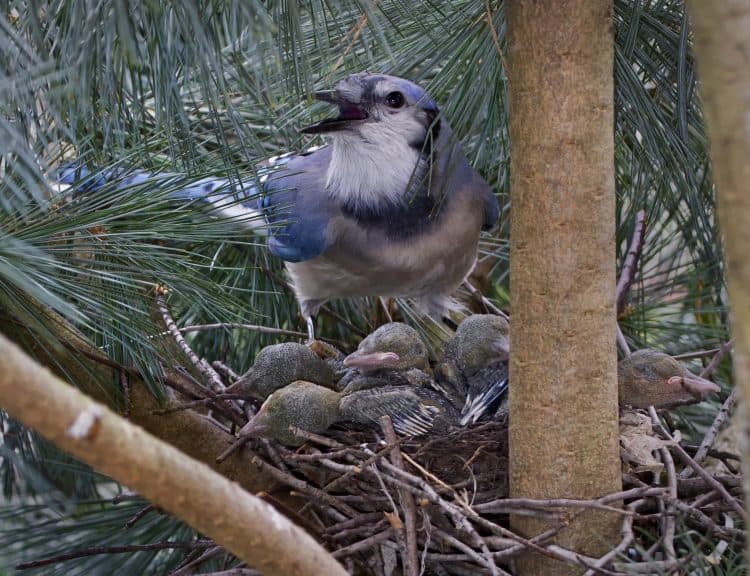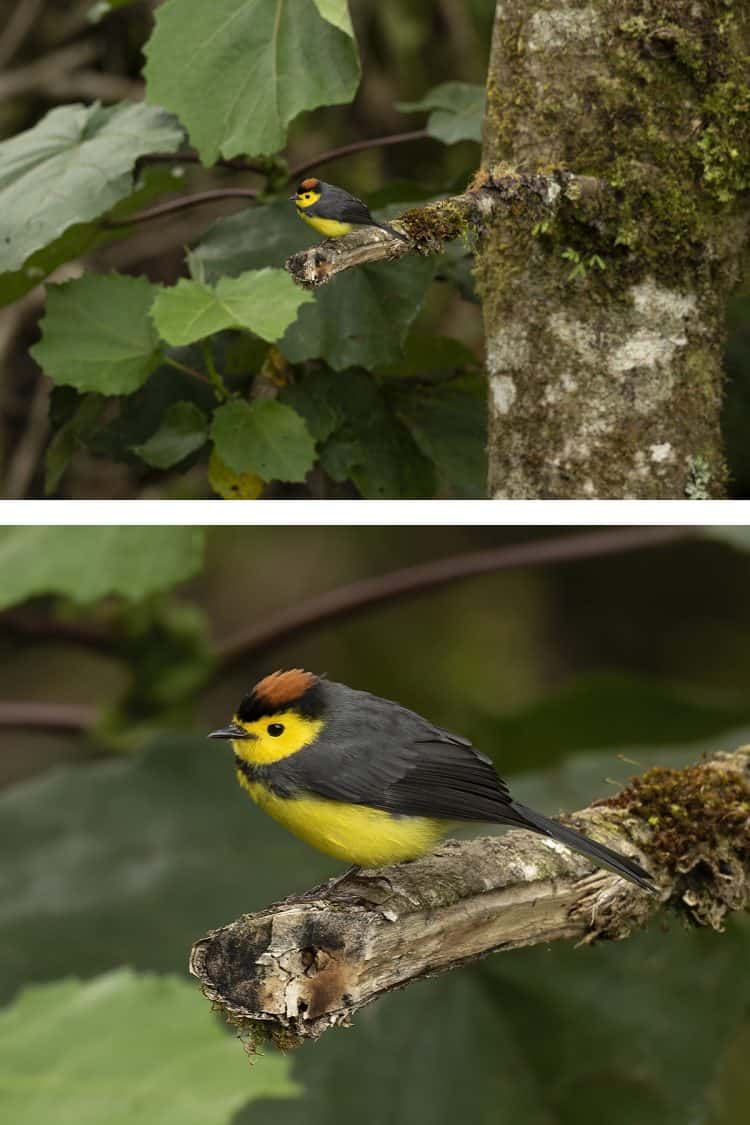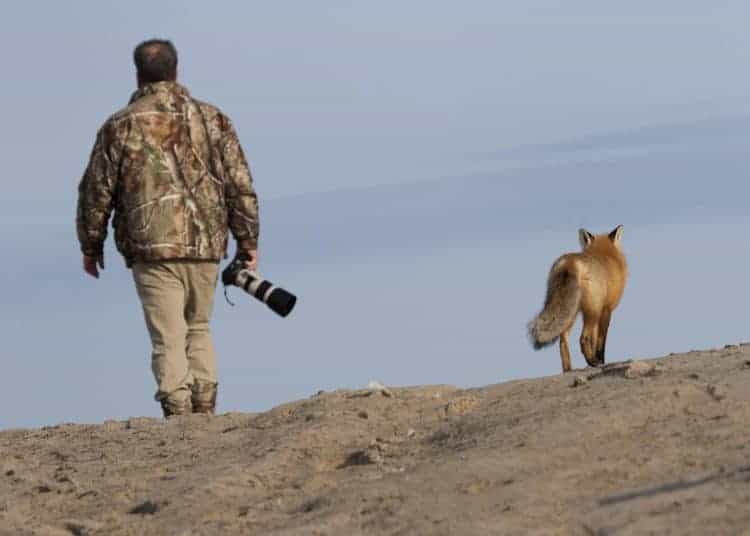It was the fall of 2001 when I walked into a Thursday night meeting of a local nature photography club. It was competition night and the members of the Camera Naturalist Photo Club handed in their slides to be sorted and loaded into the slide projector. I took a seat in the back of the room, the lights dimmed, and the competition began.
As each slide was projected, I was amazed by what I was seeing. Of course, some photos were better than others, but the final selection of winning images were as good as any I had seen in magazines.

I was new to photography and I wondered if I would ever be able to take photos as good as the images I saw that evening. That night I became a member and my journey began. I attended every meeting and listened attentively to the critiques of the judges. I sought out the best photographers in the club hoping to learn how they created such incredible photos.
They were all willing to share their knowledge and some invited me to join them on their photo shoots.
Over the next several years, my photography skills grew and so did my desire to do well in photo competitions.
I focused on getting that great storytelling image and I did whatever it took to get it. I invested in the necessary equipment and I spent hours practicing shooting birds in flight.
Photographing wildlife has been an exhilarating experience and over the years I have developed a love and respect for all creatures, great and small. I would never do anything to harm a wild animal or bird………. or would I?
Several years ago, I began questioning whether my desire to be competitive in the world of nature photography was clouding my judgement on the more important issue, the welfare of the subject.
As I studied the ethics of nature photography, it became apparent that some of my actions could be harmful to the wildlife I so admired.
Respect the Nest
Imagine the excitement I felt when I looked out my bedroom window on a spring morning in 2009 and discovered a blue jay nest. At first, it was difficult to see the chicks but as they grew, I had a pretty clear view of them. I set up my camera at the window and opened it while the adults were away looking for food. I took care not to move while the chicks were being fed. When I reviewed my early photos, I noticed an out of focus branch in the foreground which was a big distraction. I took my pruning shears and while the adult was away, I removed it. Big mistake!
Birds select a location for their nest because it conceals the chicks from predators. By cutting that branch, I compromised the camouflage and protection that location provided. Nesting birds are particularly vulnerable and following the Audubon Society Guidelines for photographing birds will help you avoid causing unnecessary disturbance or stress to birds.
Attracting with Recorded Bird Songs
During a photo workshop in the Adirondacks, I discovered how I could attract birds using recorded bird songs. The instructor used an iPod and a set of speakers. I was amazed how quickly a Black-capped Chickadee responded to the recorded call. It landed on a branch nearby and we began clicking away. When I returned home, I purchased a CD of bird songs, purchased a small set of speakers for my iPod and I was in business. I have had success using this tool, especially during nesting season when adults are protecting their territory.
Today, there are several Apps available for smart phones that make it easy for anyone to play recorded bird songs in the field. Great news for photographers and birders but maybe not for the birds we so admire. In David Sibley’s 2011 article “The Proper Use of Playback in Birding,” he points out that even though there is little research that proves the use of bird song recording has a negative impact on birds, common sense practices can minimize any negative impact this practice might have. One study (Female Eavesdropping on Male Song Contests in Songbirds, Daniel J. Mennill 2002) concluded that aggressive playback in one species caused a male bird to lose status with rivals and a potential mate, leading a female to seek extra-pair copulations. The use of recordings may also have the potential to interrupt useful activities, such as foraging and could create stress as the male chases the phantom intruder.
The use of recorded bird songs can be a useful tool but should be used responsibly. Before starting out, study the habits and behavior of the bird you are trying to attract. I have discovered that learning about the creatures I photograph adds enjoyment to the wildlife photography experience and results in a greater success rate. Play the songs at a low volume and for short periods of time then watch and wait. The speaker on your smart phone will work fine. Select a location that will provide a clear shot of the subject. Take the time to research this issue so you can make informed choices on the use of recorded songs. Read more on this subject at the Audubon web site.

Baiting with Food
I am fortunate to live near an area that has a population of red foxes. Many of my friends had wonderful photos of them in a beautiful coastal setting and I was eager to photograph this beautiful animal. I was told that a few dog biscuits would easily attract them and during my first visit I went along with this activity despite a “Do not feed fox” sign. I came away with great photos, but something just did not feel right.
I knew from my trips to Assateague Island National Seashore and Chincoteague Island that there is a good reason why feeding wildlife is problematic. The Wild Ponies are a major attraction and many visitors feed them. As a result, the ponies look at humans as a source of food and many of them can be seen standing along the road or walking through camp sites. These close encounters can be dangerous to the animal as well as for humans.
The situation is no different for the foxes. They can be seen running along the road and hanging around parking lots, looking for their next meal. Not everyone feeds them, so the time spent begging is time taken away from hunting for their natural food sources. Running along the road puts their life in jeopardy and I have even seen them standing in the road attempting to stop vehicles. It is not uncommon to have one of the foxes walk alongside a potential visitor.
Because it is so easy to get frame filling images the location has become very popular. One afternoon, my wife Cathy and I stopped to watch a few foxes close to the road. There were several other photographers there as well and I watched as they pursued their subjects. It became apparent that one of the foxes was under stress as it tried to get away from the “wildlife paparazzi.” Suddenly the fox darted into the road as an SUV came speeding by. The fox stopped inches from the wheels, turned and ran the other way over the dunes. I was so shaken from the experience that I put my camera away and was done for the day. The large group and the behavior of some of the photographers almost cost a fox its life and as one of the participants, I would have felt responsible. No photo is worth that.

Advances in Technology
In the days of film and in the beginning of the digital age, getting close to a subject was critical to getting a quality full frame shot. Today, advances in digital cameras and photo processing software offer alternatives to crowding your subject. My first digital camera was a Canon 40D and the file size was 3888 X 2592 pixels. Now I am using the Canon 5D Mark IV which produces a 6720 X 4480 image, leaving room to crop and still have some pixels to spare.
Resizing software has also come a long way. “Resize” from On1 and Photoshop both do a fine job increasing the size of an image but my go to program is Topaz Lab’s Gigapixel AI which can “enlarge your photos up to 600% while perfectly preserving image quality.” Processing time for Gigapixel AI is much longer than On1 or Photoshop but the results are worth the wait. Visit my web site to save on Topaz Lap products.
Conclusion
Wildlife photography in its purist form is challenging and requires preparation, patience, persistence, and practice. Long lenses, blinds and skillful field techniques are needed to get those intimate shots that do not include the photographer as part of the story. The thrill of photographing a red fox in Bombay Hook or a wild pony on Chincoteague Island is much more rewarding than a photo of a subject standing close by, looking for a handout.
The nature photography field has become extremely competitive and the advances in technology have raised the bar for all of us. Our desire to take our photography to the next level has the potential to cloud our judgement and put our subject’s health and safety at risk. How we conduct ourselves in the field is an individual choice and our knowledge and values will be evident when it’s time to decide where we will draw the line in our efforts to “get that next award winning shot.”
Resources
International League of Conservation Photographers http://conservationphotographers.org/about-us/mission-ethics/
National Audubon Society https://www.audubon.org/get-outside/audubons-guide-ethical-bird-photography
David DesRochers
David's passion for nature photography was sparked by a trip to Glacier National Park in the summer of 2000. Since then, he and his wife Cathy have traveled the world to witness and photograph the wonders of nature. David is a member of the North American Nature Photography Association and has written several articles for Nature Photographer Magazine. David’s photos have been recognized in several international competitions and have been published in books, magazines and on calendars. David is an accomplished public speaker and has been inspiring photographers for over 15 years. He has been a featured speaker at photography clubs and events including the New England Camera Club Council Annual Conference (2014 & 2016), the Connecticut Association of Photographers, New Jersey Audubon's Birding Festival, and the New York City Sierra Club. Visit the "Lectures & Workshops" page for a list of David's programs. David's experience judging photo competitions has taken him as far as Budoia, Italy to judge the Bio Photo Contest. In 2014, David was awarded the New Jersey Federation of Camera Clubs Citation in recognition for his contributions to the advancement of the art and science of photography in the state. As an Associate Naturalist with The New Jersey Audubon Society, David develops and teaches nature photography workshop and leads photo tours to major northeast wildlife viewing destinations.
- Web |
- More Posts(1)





Leave a Reply